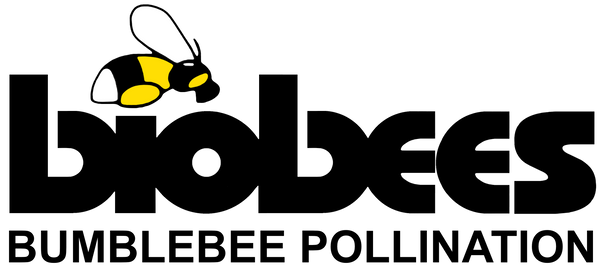Cucurbits Pollination
Recommendations
We highly recommend using bumblebees for the pollination of your cucurbits, they are highly beneficial pollinators of these crops, and international experience shows bumblebees can increase yields*
- We recommend a minimum of 2 hive per hectare as a supplement to existing pollinators (provided without sugar syrup); or
- We recommend a minimum of 4-8 hives per hectare in the absence of other pollinators (managed or otherwise)
- Use insulated outers for outdoor use
The Biology of Cucurbits
Squash, pumpkins and melons (Cucurbita spp., see Courgette for summer squash) generally have separate male and female flowers occurring on the same plant (i.e. monoecious), with only the female flowers developing into fruit. Male flowers outnumber female flowers in a range from 3½:1 to 10:1, and occur at the end of a slender stem, producing three anthers. Pollen gains are large and well suited to bumblebee transport. Female flowers occur at the end of a short peduncle, with a thick style and two-lobed stigma (♀). The swollen ovary occurs below the corolla. Flowers open early in the morning and close around midday, never to reopen.

Bumblebee in pumpkin flower
As members of the genus Curcubita have separate male and female flowers, they require a pollinator, such as a bumblebee, to transfer pollen from male to female flowers. The bumblebees must forage for both nectar and pollen, so it is important that the sugar solution is removed from the hives to encourage the bumblebees to visit female flowers. Wind is not sufficient to pollinate squash, pumpkins or melons. The pollen grains decrease in viability quickly, and pollination should ideally occur quickly once the flowers have opened, as viability will have dropped to around 75% by the time the flower closes.
As members of the genus Curcubita have separate male and female flowers, they require a pollinator, such as a bumblebee, to transfer pollen from male to female flowers. The bumblebees must forage for both nectar and pollen, so it is important that the sugar solution is removed from the hives to encourage the bumblebees to visit female flowers. Wind is not sufficient to pollinate squash, pumpkins or melons. The pollen grains decrease in viability quickly, and pollination should ideally occur quickly once the flowers have opened, as viability will have dropped to around 75% by the time the flower closes.
Potential Pollination Issues
Flowers close earlier on hot days, so it is important that bees are active early in the morning, which is generally the case with bumblebees. Pollen viability decreases quite rapidly after the flower has opened.
As with all flowering plants, the health and nutrition of the plant can affect pollen production and viability. Poor quality/quantities of pollen will have negative impacts on the bumblebee hive, and may lead to bumblebees searching for alternative pollen sources away from the crop, or to a reduction in the life of the hive. It is important to ensure that the plants are vigorous and healthy during flowering, and that their nutritional requirements are adequately met.
* see this link for additional information
